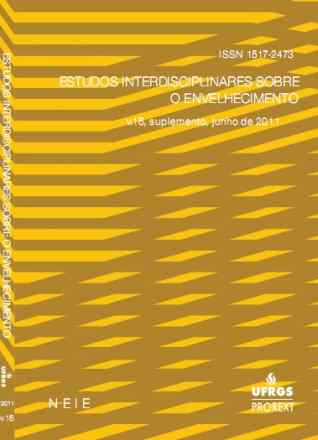ASSOCIAÇÃO ENTRE TONTURAS, QUEDAS E TESTE DO ALCANCE FUNCIONAL EM IDOSOS DA COMUNIDADE
Estudos Interdisciplinares Sobre O Envelhecimento
ASSOCIAÇÃO ENTRE TONTURAS, QUEDAS E TESTE DO ALCANCE FUNCIONAL EM IDOSOS DA COMUNIDADE
Autor Correspondente: Adriane Ribeiro Teixeira | [email protected]
Palavras-chave: tontura, quedas, idoso, equilÃbrio postural
Resumos Cadastrados
Resumo Português:
Este estudo teve como objetivo verificar a associação entre a tontura, o teste do alcance funcional e o histórico de quedas. Foram avaliados 50 idosos, utilizando-se entrevista elaborada para este estudo e o teste de alcance funcional. Os resultados evidenciaram que 52% dos idosos apresentavam tontura e 24% relataram queda nos últimos 6 meses. No teste do alcance funcional 38% dos idosos atingiram Ãndices superiores a 25 cm. A análise estatÃstica foi feita utilizando-se os testes Qui-Quadrado, Mann-Whitney e Kruskal-Wallis e demonstrou que não houve associação entre as variáveis pesquisadas.
Resumo Inglês:
This study aimed to investigate the association among dizziness, functional reach test and history of falls. Fifty patients were evaluated, using interviews prepared for this study and the functional reach test. Results showed that 52% of elderly had dizziness and 24% reported a fall in the last 6 months. In the functional reach test, results pointed that 38% of the elderly reached values higher than 25 cm. Statistical analysis was performed using the Qui-Quadrado, Mann-Whitney and Kruskal-Wallis tests and demonstrated that there was no association between the variables studied.

